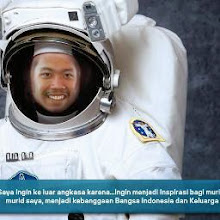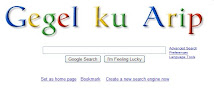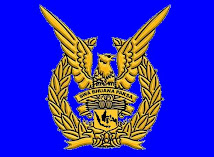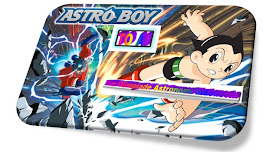Indonesian Space Sciences & Technology School
Disusun Ulang Oleh:
Arip Nurahman
Department of Physics, Indonesia University of Education
&
Follower Open Course Ware at MIT-Harvard University, Cambridge. USA.
Semoga Bermanfaat dan Terima Kasih
Welcome to the Beginner's Guide to Rockets | ||||
 | ||||
| The Beginner's Guide to Rockets will help you learn the basic math and physics that govern the design and flight of rockets. We'll look at many different kinds of rockets, from stomp rockets, which are a special kind of artillery shell, to bottle rockets, to model rockets, to full scale boosters. We'll look at the similarities and the differences in these rockets and include some instructions for making and flying your own rockets. | ||||
At this Web site you can study how rockets operate at your own pace and to your own level of interest. There is a lot of mathematics at this web site, so we provide background pages on many mathematical topics. The flight of the rocket involves the interaction of forces, so we include background pages on the fundamentals of forces. Aerodynamics plays a major role in the flight of toy rockets and in the generation of thrust for full scale rockets, so there are background pages devoted to basic aerodynamics . There are also background pages on thermodynamics and gas dynamics because of the role they play in rocket propulsion. Since we will be sending rockets to the Moon and Mars , we provide some background information on these planets in addition to our home planet. The majority of the information at this web site is presented at a high school or early college level, although much of the information can also be used by middle school students and the general public. Information is provided for both students and teachers. The site includes materials that were developed over a ten year span by several different authors, so the pages do not all look the same. We have added navigation buttons to ease movement across and within the work of a given author. Most of the pages are presented in the following format: a graphic at the top which the user can capture and incorporate into their own presentations or class notes; a text explaining the topic presented in the graphic and including many hyperlinks to related topics; navigation links at the bottom to related educational activities, closely related web pages, and an index of all the pages. Using the Index of Web Pages, you are never more than two clicks away from any other Web page at this site. Just click on the word "Index" at the bottom of any page, and then click to a new page from the index. We have intentionally organized this site to mirror the unstructured nature of the world wide web. However, if you prefer a more structured approach, you can also take one of our Guided Tours through the site. Each tour provides a sequence of pages dealing with some type or aspect of rockets. Web pages that include Interactive Java applets are noted in the index. RocketModeler II, RocketThrust Simulator, and the AtmosModeler Simulator are provided to encourage students to explore science and math. The programs allow students to design and fly rockets on their personal computer and can be downloaded to operate off-line. Additional Classroom Activities are also available at this site. This site was prepared at the NASA Glenn Research Center in support of the Educational Programs Office and was funded by the Exploration Systems Mission Directorate. Many of the pages at this site were prepared to support videoconferencing for teachers and students as provided by the Digital Learning Network. Much of the information available in the Rockets Educator's Guide publication is available on-line at this site. | ||||
Arip Nurahman
Department of Physics, Indonesia University of Education
&
Follower Open Course Ware at MIT-Harvard University, Cambridge. USA.
Semoga Bermanfaat dan Terima Kasih























